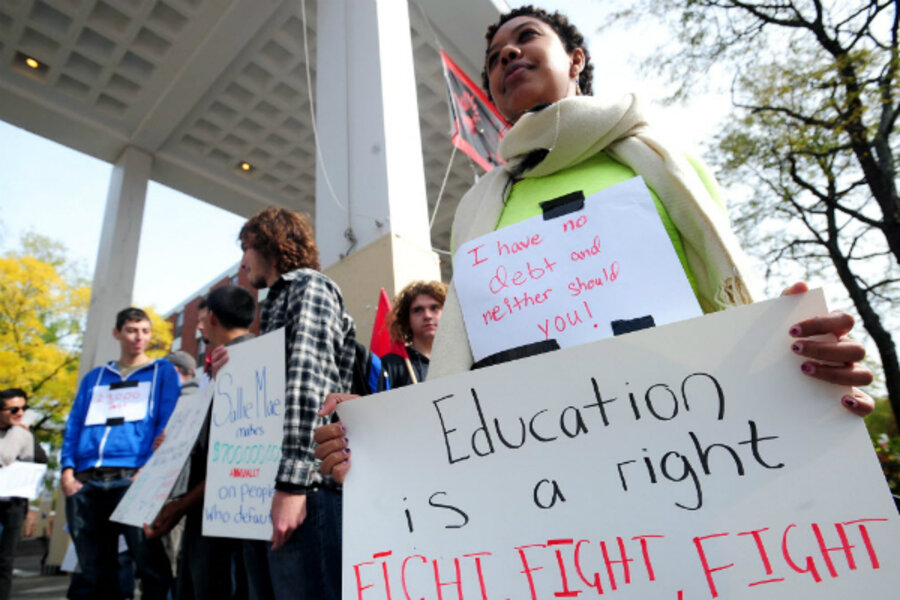No surprise to students: College debt is up 5 percent for Class of 2011
Loading...
Everyone has heard that student debt is dragging young people down. But by just how much? And is anything being done to lighten the load?
The average debt for a graduate of the Class of 2011 weighed in at $26,600 – 5 percent higher than for the Class of 2010, according to a report out Thursday by The Institute for College Access & Success.
“As debt levels rise, fear of loans can prevent students from getting the education they need to succeed,” said TICAS President Lauren Asher. “Students and parents need to know that, even at similar looking schools, debt levels can be wildly different.”
The report and a related online database show the average debt of graduates in each state, and at many individual public and private schools. Not enough for-profit colleges reported the information to be included.
Students in New Hampshire and Pennsylvania bear the heaviest load, at $32,440 and $29,959, respectively. Utah and Hawaii top the list of low-debt states, each at about $17,000.
For specific colleges, average debt of 2011 grads ranged from $3,000 to $55,250. Examples of high-debt colleges listed in the report include the public Kentucky State University and the private Nova Southeastern University in Florida.
Rising college costs are certainly a factor. But some of students’ spiraling debt problems could be avoided if they had better information up front, and throughout the process of borrowing and repaying loans, other recent reports suggest.
“There is some evidence that the fact that students don’t understand the loans that they are taking out could lead to them taking out many more loans than they otherwise would,” says Rory O'Sullivan, policy director of Young Invincibles, an advocacy group for 18- to 34-year-olds.
Young Invincibles and NERA Economic Consulting surveyed students and recent graduates with $75,000 or more debt and found that about 26 percent of those who had federal loans did not believe they had received accurate information on those loans; ditto for 46 percent of those with private loans.
Alhough counseling for federal loans is mandated by law, 40 percent said they didn’t receive counseling. It may be that some of them received an information paper to sign and didn’t realize that counts under the loose counseling law, Mr. O’Sullivan says.
When it comes to paying back loans, many graduates are also having trouble with their loan servicers. Since March 2012, the Consumer Financial Protection Bureau has received approximately 2,900 complaints about private student loans. The bureau includes an ombudsman to assist borrowers with such complaints.
Efforts are under way to make college financial aid options easier to understand and compare.
Colleges and universities are now required to have net price calculators on their websites, to give students an individual estimate of what tuition and living expenses would cost once financial aid is taken into account. However, the calculators lack uniformity, “so the extent to which they are really understandable to students is a question,” says Laura Perna, a professor at the University of Pennsylvania’s Graduate School of Education.
Another source of confusion is the financial aid award letters that colleges send to accepted students, Ms. Perna and others say.
More than 300 colleges have agreed to use, by 2013-14, a new common financial aid award letter to help students see costs clearly and compare choices before deciding which college to attend. Some lawmakers hope to mandate that kind of “shopping sheet” nationwide.
With young college graduates unemployed at a rate of 8.8 percent in 2011, and many more experiencing underemployment, loans may be difficult to pay back. But for those without a degree, unemployment was 19.1 percent, TICAS reports.
“A college degree is still your best bet for getting a job and decent pay,” Ms. Asher said.








